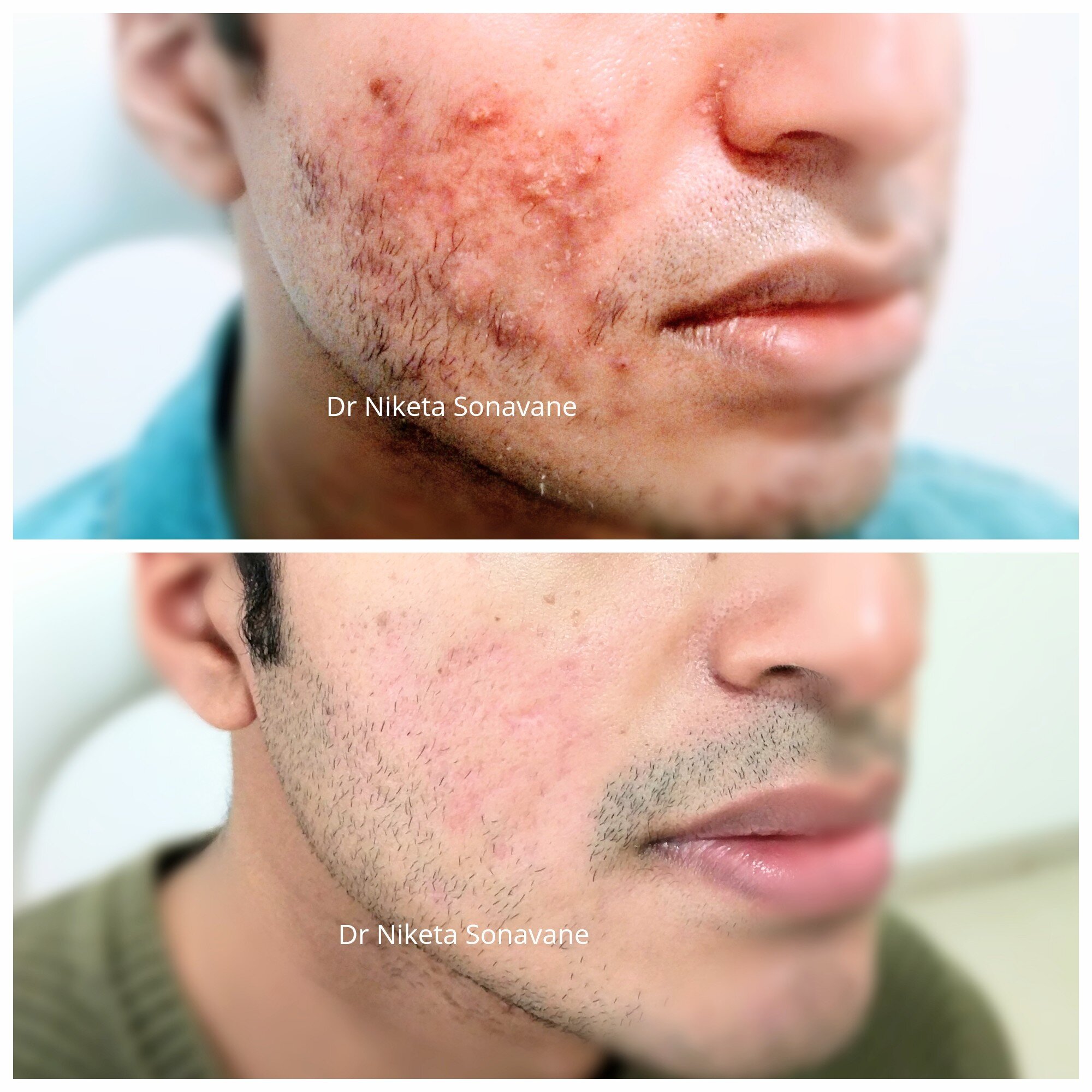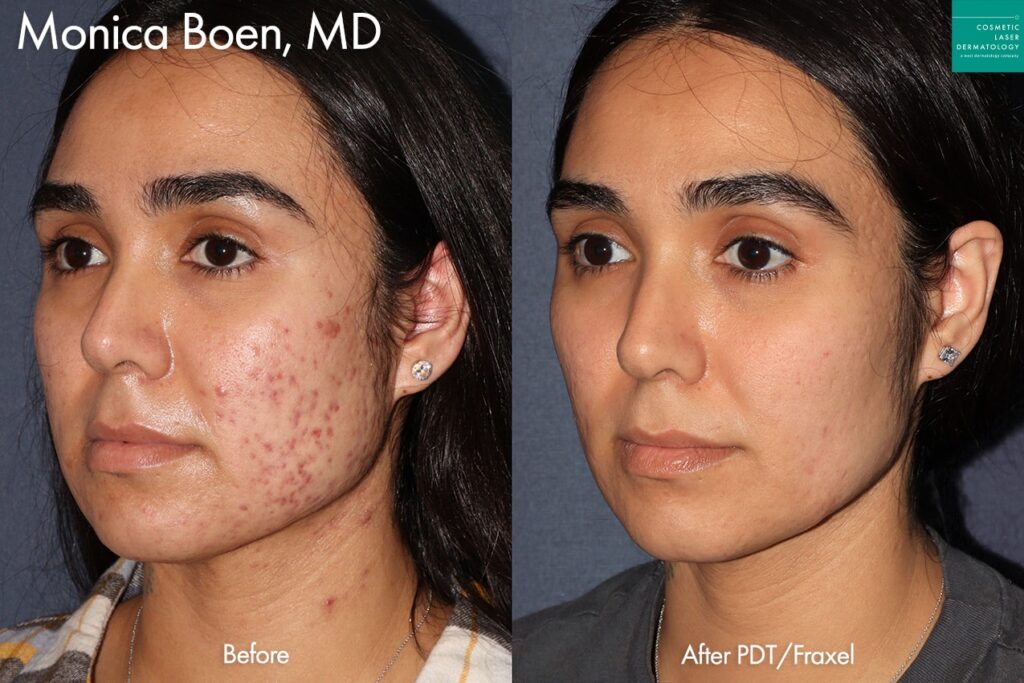Exploring Skin Disease: Identifying and Dealing With Acne Scars for Healthier Skin
Acne scars represent a significant issue for individuals seeking to maintain healthy skin, as they can influence both look and self-worth. Comprehending the numerous kinds of scars, from atrophic to hypertrophic, is important for identifying proper treatment choices. While specialist interventions like chemical peels and microneedling can be reliable, the significance of customized treatment strategies can not be overstated. Additionally, preventative steps play an important duty in minimizing future scarring. As we check out these elements, one have to consider how the ideal method can cause transformative results.
Comprehending Acne Marks
Understanding acne scars is crucial for any individual who has actually experienced serious acne, as these marks can have a long lasting influence on both physical appearance and emotional wellness. When the skin undergoes inflammatory responses throughout active acne lesions, acne scars form. The extent of scarring is commonly influenced by aspects such as the kind of acne, its duration, and specific skin characteristics.
The body's natural recovery procedure can result in either atrophic marks, which look like depressions in the skin, or hypertrophic scars, which are raised and result from overproduction of collagen. In addition, the emotional toll of acne marks must not be ignored; lots of people report sensations of shame, stress and anxiety, and reduced self-esteem. This emotional problem can impact social interactions and overall lifestyle.
Resolving acne marks calls for a detailed understanding of their formation and effect. Recognition of the capacity for lasting consequences related to unattended scars can encourage individuals to look for appropriate therapies. Early intervention and effective monitoring strategies can considerably enhance skin look and improve emotional durability, stressing the significance of recognizing the complexities bordering acne marks.
Sorts Of Acne Marks
Acne scars can be classified right into distinct kinds, each showing special characteristics and needing details treatment methods. The primary sorts of acne marks consist of atrophic, hypertrophic, and keloid marks.

Hypertrophic scars, in contrast, are elevated above the skin level and are the result of extreme collagen production during the recovery procedure. They usually continue to be within the boundaries of the original acne sore. Keloid scars are similar but expand past the original injury website, developing bigger, increased areas that can be agonizing or scratchy.
Recognizing these kinds of scars is essential for selecting ideal treatment choices. Various marks may react better to specific treatments, such as laser therapies, fillers, or medical treatments, stressing the relevance of a customized method to acne scar monitoring.
Recognizing Your Marks
Acne scars generally fall into two classifications: hypertrophic and atrophic scars. These can further be identified right into ice-pick scars, boxcar scars, and rolling marks, each exhibiting distinct features and calling for different strategies for assessment - acne and acne scars treatment.
Hypertrophic marks, on the various other hand, check out here are increased and occur because of excessive collagen manufacturing throughout the healing procedure. Recognizing the certain attributes of your marks-- such as width, depth, and texture-- is essential for appropriate identification. Additionally, take into consideration the distribution of marks across your skin, as this can show the intensity and duration of the acne problem.
Involving with a skin doctor can provide beneficial insights into the nature of your marks, aiding in the differentiation between numerous kinds. A thorough understanding of your marks will eventually bring about an extra tailored and reliable treatment plan, ensuring a more clear and much reference healthier skin tone.
Therapy Choices Readily Available
Recognizing the particular kind of acne scars existing on your skin prepares for exploring effective therapy choices. Usual kinds of acne marks consist of atrophic (clinically depressed), hypertrophic (increased), and post-inflammatory erythema.
For atrophic scars, choices such as chemical peels, microneedling, and laser resurfacing are commonly utilized. Chemical peels use acids to eliminate the external layer of skin, promoting brand-new cell development.
Hypertrophic scars can be treated with corticosteroid shots to squash the mark or laser therapy to minimize redness and improve look. skin rejuvenation treatments. Silicone gel sheets and pressure dressings might also assist in managing increased scars
In addition, dermal fillers can temporarily fill out depressions from atrophic scars, while surgical excision might be ideal for severe instances. Each therapy alternative has its benefits and factors to consider, making it important to seek advice from a skin specialist. They can provide customized suggestions based on the type and seriousness of your marks, in addition to your skin kind and overall health.
Tips for Avoidance
Efficient avoidance strategies can considerably decrease the likelihood of developing acne marks. Utilizing non-comedogenic products assists avoid clogged up pores, which can intensify acne.
Staying clear of the impulse to pop or choose acne lesions is crucial, as this can cause much deeper skin damage and increase the threat of scarring. Instead, think about making use of a cold compress or over-the-counter treatments to reduce anonymous swelling and soreness.
Sun defense is one more crucial facet of prevention; ultraviolet (UV) rays can dim marks and hinder the recovery procedure. Using a broad-spectrum sun block with a minimum of SPF 30 daily can safeguard the skin and promote even healing.
Lastly, preserving a balanced diet abundant in minerals, vitamins, and anti-oxidants supports skin wellness and healing. Staying hydrated and managing stress and anxiety levels can also play a significant role in decreasing acne flare-ups. By executing these strategies, people can considerably reduce their opportunities of establishing acne marks.

Final Thought
To conclude, understanding and determining acne scars is necessary for reliable therapy and attaining much healthier skin. Different kinds of acne marks, consisting of hypertrophic and atrophic marks, require specific interventions customized to specific demands. Treatment alternatives range from chemical peels and microneedling to corticosteroid shots, stressing the importance of getting in touch with a skin specialist. Additionally, taking on a mild skincare regimen and safeguarding the skin from UV exposure can significantly contribute to the prevention of more scarring and total skin health and wellness.
The body's all-natural healing process can result in either atrophic scars, which show up as depressions in the skin, or hypertrophic marks, which are increased and result from overflow of collagen. They are more divided into 3 subtypes: ice choice scars, boxcar scars, and rolling marks. Acne marks normally fall into two groups: atrophic and hypertrophic scars. These can further be categorized into ice-pick marks, boxcar scars, and rolling marks, each exhibiting distinct characteristics and needing various strategies for evaluation.
Different types of acne marks, consisting of atrophic and hypertrophic marks, necessitate certain treatments tailored to private needs.
Comments on “Best Acne and Acne Scars Treatment: Restore Your Skin's Natural Beauty”